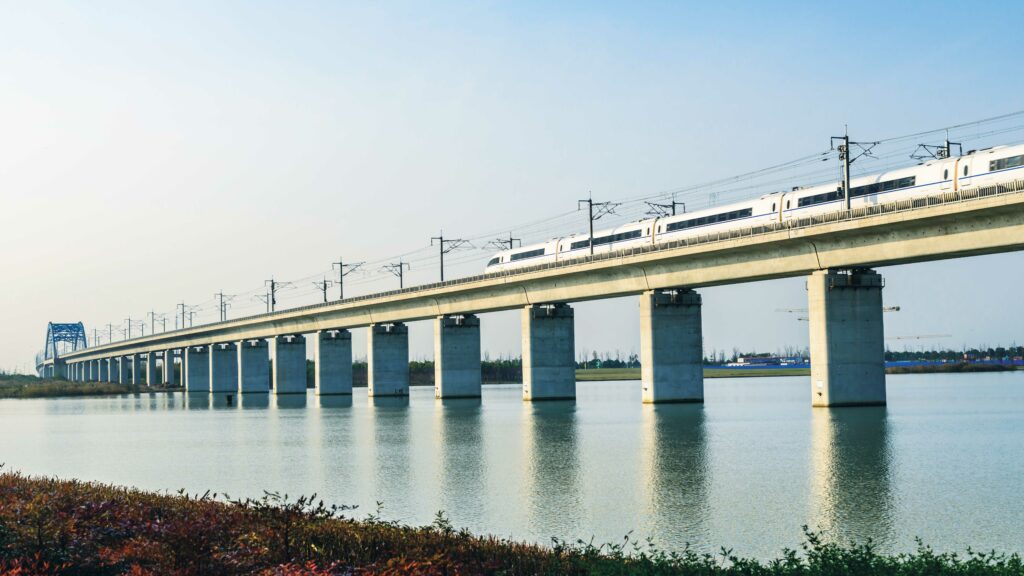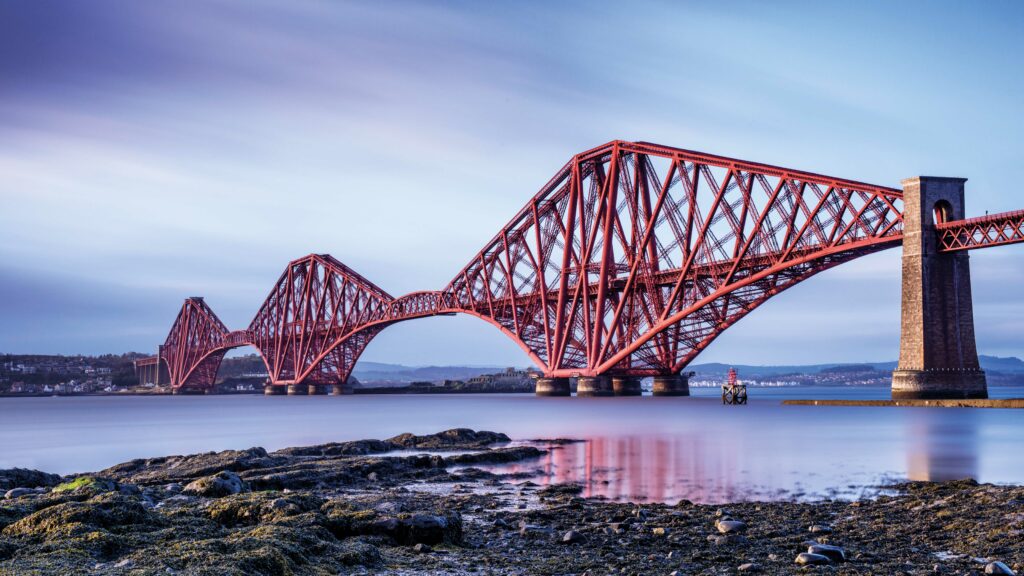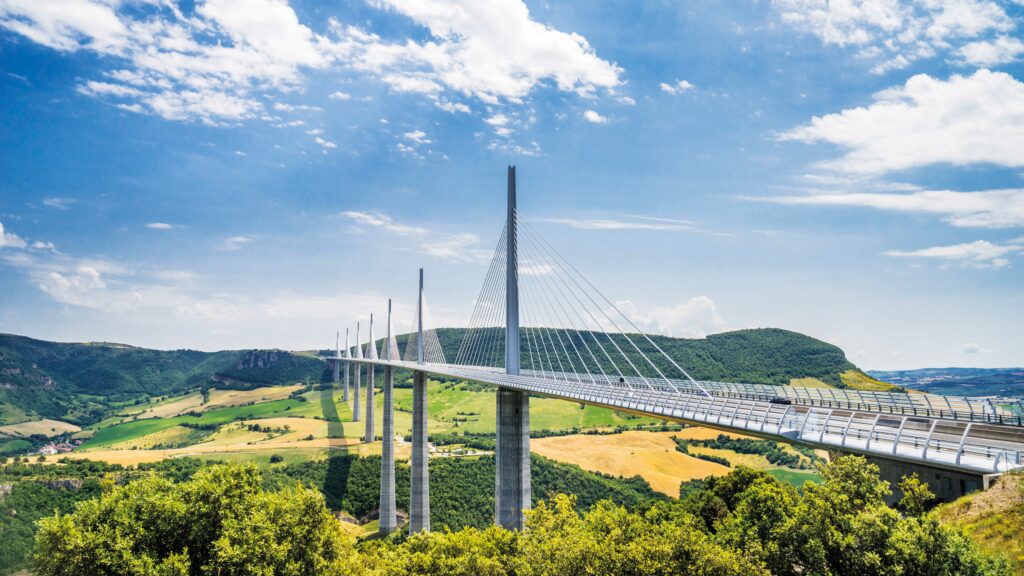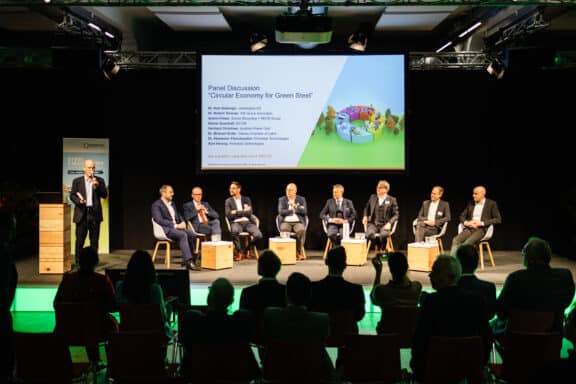Steel is a crucial material in our society. Its strength and malleability have allowed it to be transformed into varying shapes, structures, and tools, both big and small. In this series, we explore how steel has become a part of our world—in the most conspicuous and inconspicuous ways. Here, we explore steel bridges that have served communities worldwide by establishing connections through vital infrastructure.
Bridges have served to connect communities for centuries, and the evolution of the modern industrial bridge has shared an important kinship with the development of the iron and steel industry. In 1779, one of the first iron arch bridges, called the “Iron Bridge” over the River Severn in Shropshire, England, U.K., was completed. Made from cast iron components, for engineers, the “Iron Bridge” carried as much weight as the steam engine in terms of defining the beginning of the Industrial Revolution. What became clear is how much of a role the strength of iron and steel would play in constructing some of the world’s most famous bridges.
From Arches to Cable-Stayed
The “Iron Bridge” is an arch bridge. Arch bridges are defined by their characteristic shape and through their redistribution of stress from the top of the bridge onto the arch structure underneath the bridge, usually utilizing trusses or a collection of beams to create the arch. An arch bridge draws on other types of bridges or at least their simple design principles. All bridges can be understood through the following terms—i.e., beam, truss, arch, cantilever, suspension, and cable-stayed.
The materials of a bridge must not only be strong but noble, and nothing
Joseph Strauss
is nobler or more enduring than steel.
Chief engineer of the Golden Gate Bridge
Beginning with beam-type bridges, these bridges are the simplest, consisting of a so-called beam that extends to cross a gap or to a supportive structure. Beam bridges typically work for short distances as they require supports to accommodate longer distances. The downward forces on the bridge from crossing traffic push the top part of the bridge together, and the bottom part is stretched or put under tension. When visualizing a wooden beam across a gap, one can observe that placing downward forces in the middle—such as standing at the center—causes the beam to curve. The top part compresses while the bottom part is under tension.
Alternatively, one can support a beam bridge from above utilizing a truss. The truss bridge still bends like a beam bridge. However, the compression and tension forces are distributed across the supports, typically above the bridge. The main principle of the truss bridge is its ability to withstand forces thanks to the triangular design of a truss itself. Due to the universal nature of these types of triangular structures, trusses can be found in various types of bridges, including arch and cantilever bridges.
Arch bridges, which can also contain trusses, distribute vertical and horizontal compression forces into their foundations at each supportive end of the bridge. Similarly, cantilever bridges are anchored at the points where they connect, with vertical forces extending downward to supportive foundations. However, unlike an arch bridge, a beam or truss bridge-like element extends out and connects the cantilevered segments.
Finally, suspension bridges carry loads on large curved cables with parallel cables extending to the bridge deck below. This is typically achieved by having large anchor points that resist the pull of the cables. Cable-stayed bridges have a similar construction where diagonal cables extend out from the anchor point instead of from a large arched cable.
Whether arched or cable-stayed, what is clear is that since the eighteenth century, the role of iron and steel has been integral to the development and engineering of some of the most massive structures in the modern world.
A History in Iron and Steel
True to its name, the “Iron Bridge,” was constructed out of cast iron and spans 31 meters. Today, the largest arch bridge in China is the Tian’e Longtan Bridge, which spans 600 meters. This extreme difference in length has much to do with the development and implementation of steel in bridge construction.
While older bridges from the eighteenth century utilized cast iron, its brittle nature drew concerns from early engineers for such applications. Concerns increased after some cast iron bridges in the nineteenth century failed with the introduction of trains. Subsequently, wrought iron was introduced into various products that became widely used in “chain bridges.”
These bridges, using chains from wrought iron, utilized the same tension principles as suspension bridges. In 1820, the Union Bridge, a suspension bridge with a span of 137 meters, was completed over the River Tweed. Unlike previous wrought iron chain bridges, the Union Bridge utilized wrought iron eyebar chains with wire rope for reinforcement. Wrought iron was used for truss bridges until the 1870s when steel became the engineering standard. In 1874, the era of steel bridges began in the United States. The Eads Bridge in St. Louis, Missouri, U.S.A., is not entirely made from steel but utilizes high carbon steel and was one of the first large-scale applications of alloy steel. Then, in 1879, the Glasgow Steel Bridge in Missouri, U.S.A., was the first bridge made entirely out of steel.
Modern Marvels
Bridges today span epic distances and tower over their predecessors. Following the broad adoption of steel and advances in engineering, bridges have become marvels of the modern industrial landscape. Today, the tallest bridge in the world is the Millau Viaduct, which towers 343 meters across the Tarn Gorge in southern France. In China, the longest bridge in the world is the Danyang-Kunshan Grand Bridge, at 164,800 meters in length, located between Shanghai and Nanjing in Jiangsu province. With their now towering heights and astounding lengths, bridges are key pieces of infrastructure and will continue to connect people and communities as they have for thousands of years.





